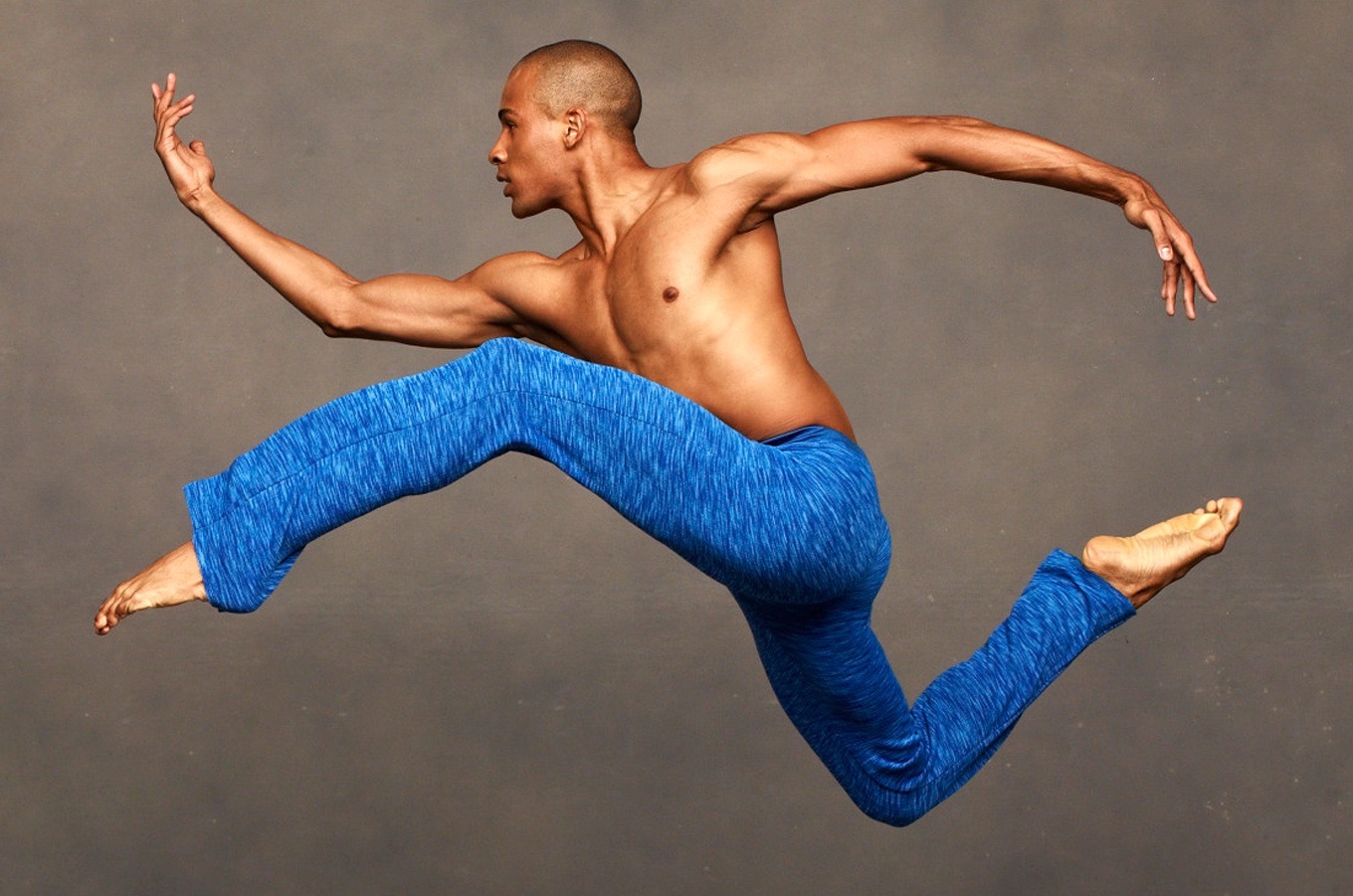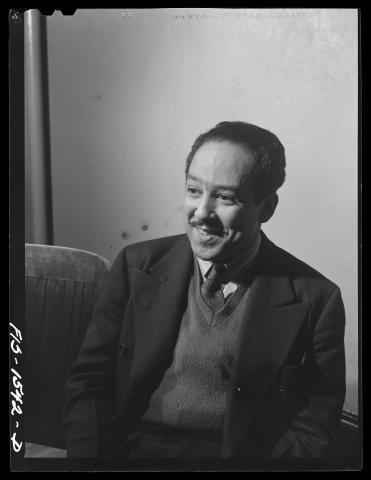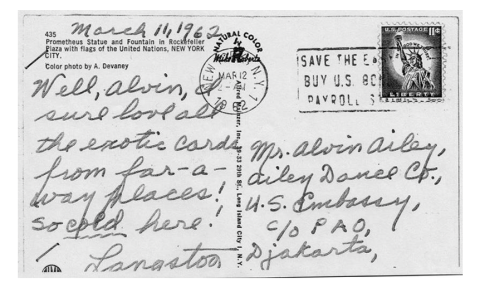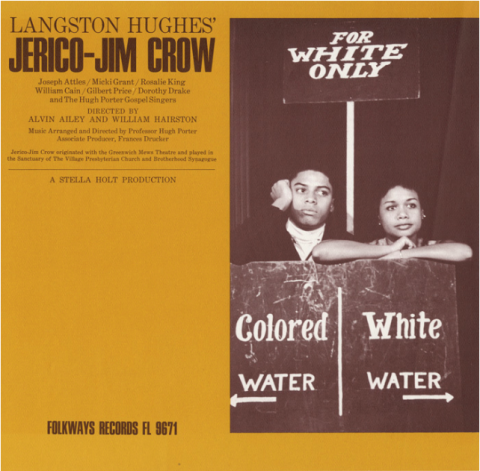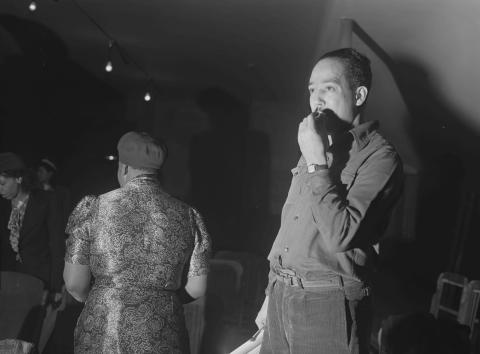Alvin Ailey & Langston Hughes
Posted February 28, 2024
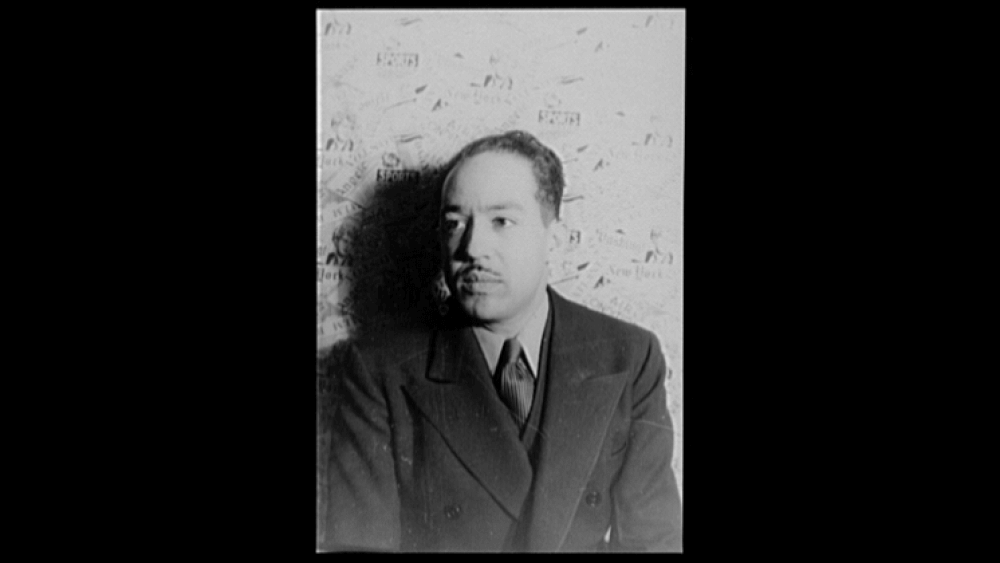
During Black History Month, Ailey is highlighting artists from different disciplines—music, poetry, visual arts—whom Alvin Ailey collaborated with and whose own works explore Black American cultural heritage. The final artist we’re spotlighting in this series is poet Langston Hughes. They met when Mr. Ailey first arrived in New York, and the two shared a friendship that influenced both of their work.
When writer Langston Hughes arrived in New York in 1921 to study at Columbia University, he immediately found his way to Harlem, the center of Black American culture at the beginning of the Harlem Renaissance. “I can never put on paper the thrill of that underground ride to Harlem,” Mr. Hughes wrote. “When I saw it, I held my breath [...] Hundreds of colored people! I wanted to shake hands with them, speak to them.” Hughes made it his home.
Unlike other poets of the time, he incorporated the realities of life for the Black people around him into his writing—their jobs, their relationships, their social events, their dances, their vernaculars and rhythms of speech. “He addressed his poetry to the people, specifically to Black people,” wrote critic Donald B. Gibson. “During the twenties when most American poets were turning inward, writing obscure and esoteric poetry to an ever decreasing audience of readers, Hughes was turning outward, using language and themes, attitudes and ideas familiar to anyone who had the ability simply to read.” In this way, Mr. Hughes shared a creative impulse with Mr. Ailey. Both artists used Black forms of communication to speak directly to their audiences in their own languages.
Langston Hughes. Photo by Jack Delano.
Mr. Ailey moved to New York in 1954 to perform in the cast of Truman Capote’s House of Flowers, a production filled with talented Black artists of the time. This was his introduction to many artists, writers, and celebrities of the Harlem Renaissance: Carl Van Vechten, Zora Neale Hurston, Lena Horne, and Langston Hughes. Soon after meeting, Mr. Hughes became something of an advocate for Mr. Ailey’s work. Once Mr. Ailey had established Alvin Ailey American Dance Theater as a touring company, Mr. Hughes would sometimes show up in international cities to act as an informal ambassador, as he did during a festival of Black diasporic arts in Dakar, Senegal.
Mr. Hughes also gave classes at the Clark Center, the base of operations for the Ailey company in the ’60s, where he taught children in youth programs about poetry and jazz. Mr. Ailey often pointed to his friend’s writing as inspiration for his ballets. In 1964, Hughes wrote a description of Revelations for a performance at the Delacorte Theater in Central Park:
“The spirituals sing of woe triumphantly, knowing well that all rivers will be crossed and the Promised Land is just beyond the stream. The spirituals ask no pity—for their words ride on the strongest of melodies, the melody of faith. That is why there is joy in their singing, peace in their music, and strength in their soul.
Postcard from Langston Hughes to Alvin Ailey, courtesy of the Ailey Archives.
Mr. Ailey and Mr. Hughes attempted to make their relationship a more collaborative one when Mr. Ailey was brought in to choreograph and star in Mr. Hughes’ theatrical production, Wasn’t It a Mighty Day! in 1961. The show, a gospel retelling of the birth of Jesus, was eventually retitled Black Nativity, and remains an audience favorite today. It features joyous gospel singing and repositions Christianity through an Africanist lens, which not everyone agreed with at the time. Mr. Hughes’ embracing of Africanist forms to show pride in African identity was seen by some Black Americans as counterproductive to the work of integration that was happening during the ’60s. Carmen De Lavallade, who was initially set to perform in Black Nativity, left the show because she did not agree with his viewpoints. When she left, Mr. Ailey followed.
In 1963, after the misfire collaboration of Black Nativity, Mr. Hughes again approached Mr. Ailey about directing a new play of his called Jerico-Jim Crow. The musical was about the struggle for Black Americans from enslavement to the fight for civil rights. The musical once again featured gospel music and spirituals; one of the spirituals in the show was “I Been ‘Buked, I Been Scorned,” the opening song from Mr. Ailey’s Revelations. Mr. Ailey agreed to co-direct the play with William Hairston and this time saw the production through. Mr. Hughes called the new play “a serious but entertaining and optimistic play about the freedom movement,” which included, “young people of all racial and religious backgrounds who are meeting, working, canvassing, petitioning, marching, picketing, sitting-in, singing and praying today to help make America better for all, and especially for citizens of color.”
“Langston Hughes’ Jerico-Jim Crow,” Folkways Records, 1964.
Mr. Ailey and Mr. Hughes experienced similar tensions around perceptions of their work as Black artists in the civil rights era. While Mr. Hughes was sometimes criticized for showing too much pride in his identity, Mr. Ailey experienced criticism from Black activist groups for making his Company multiracial. At the same time, he also had to fend off critics that said his ballets, which leaned into jazz or ragtime aesthetics, had become too “commercial.”
Mr. Hughes died in 1967, only four years after the premiere of Jerico-Jim Crow. His death was a major loss for Mr. Ailey who related to Hughes’ reclamation of Black art through his poetry, novels, and plays. Throughout their friendship, they inspired each other to explore their ancestral past. Their works continue to resonate with audiences today because they did not shy away from looking to their roots as African Americans for inspiration to create art that is universally understood around the world.
Langston Hughes in rehearsal. Photo by Jack Delano.
